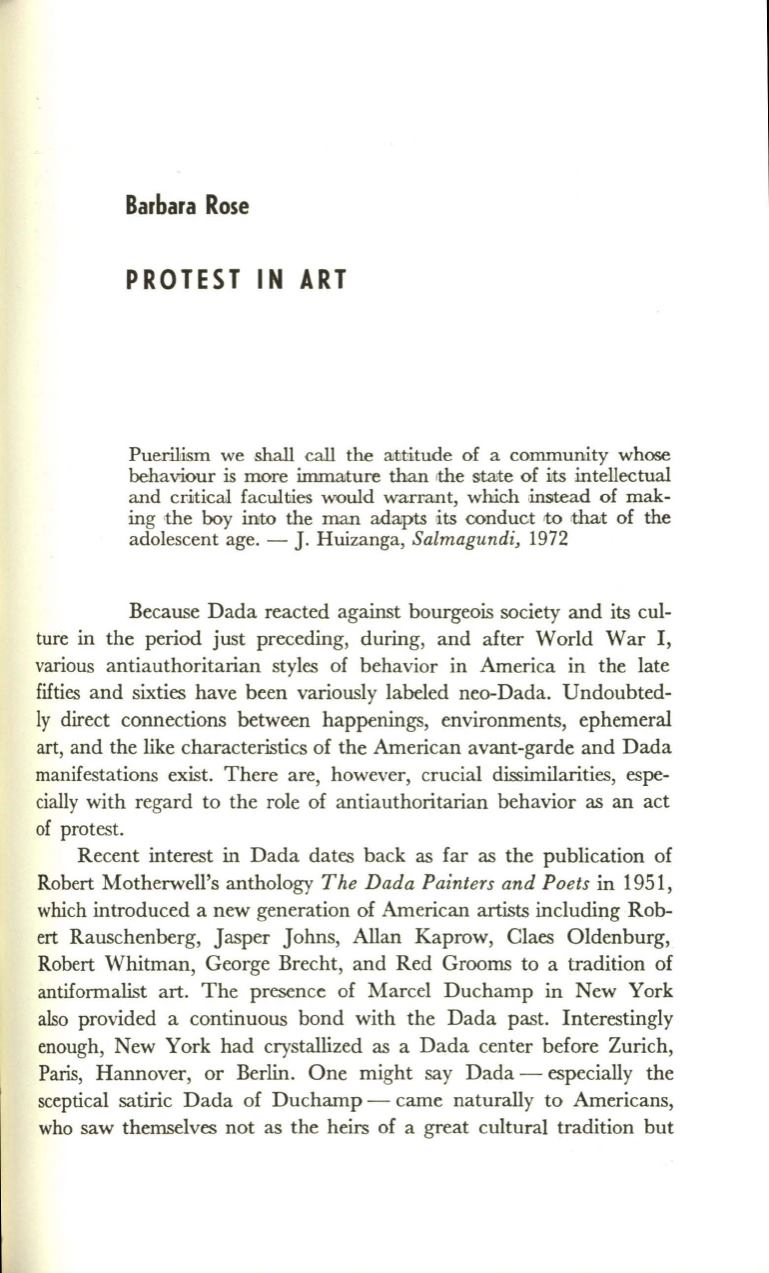
Barbara Rose
PROTEST IN ART
Pueril~m
we shall call the attitude of a community whore
behaV'iour is more immature than Ithe state of
iJt:s
intellectual
and
CI<~ticaJ
faculties would warmlIlt, which instead of mak–
ing ,the boy
illto
the man
adapts
its conduct
10
il:hat of the
adolescent age. -
J.
Huizanga,
Salmagundi, 1972
Because Dada reacted against bourgeois society and its cul–
ture in the period just preceding, during, and after World War I,
various antiauthoritarian styles of behavior in America in the late
fifties and sixties have been variously labeled neo-Dada. Undoubted–
ly
direct connections between happenings, environments, ephemeral
art, and the like characteristics of the American avant-garde and Dada
manifestations exist. There are, however, crucial dissimilarities, espe–
cially with regard to the role of antiauthoritarian behavior as an act
of protest.
Recent interest
in
Dada dates back as far as the publication of
Robert Motherwell's anthology
The Dada Painters and Poets
in 1951,
which introduced a new generation of American artists including Rob–
ert Rauschenberg, Jasper Johns, Allan Kaprow, Claes Oldenburg,
Robert Whitman, George Brecht, and Red Grooms to a tradition of
antiformalist art. The presence of Marcel Duchamp in New York
also provided a continuous bond with the Dada past. Interestingly
enough, New York had crystallized as a Dada center before Zurich,
Paris, Hannover, or Berlin. One might say Dada - especially the
sceptical satiric Dada of Duchamp - came naturally to Americans,
who saw themselves not as the heirs of a great cultural tradition but


